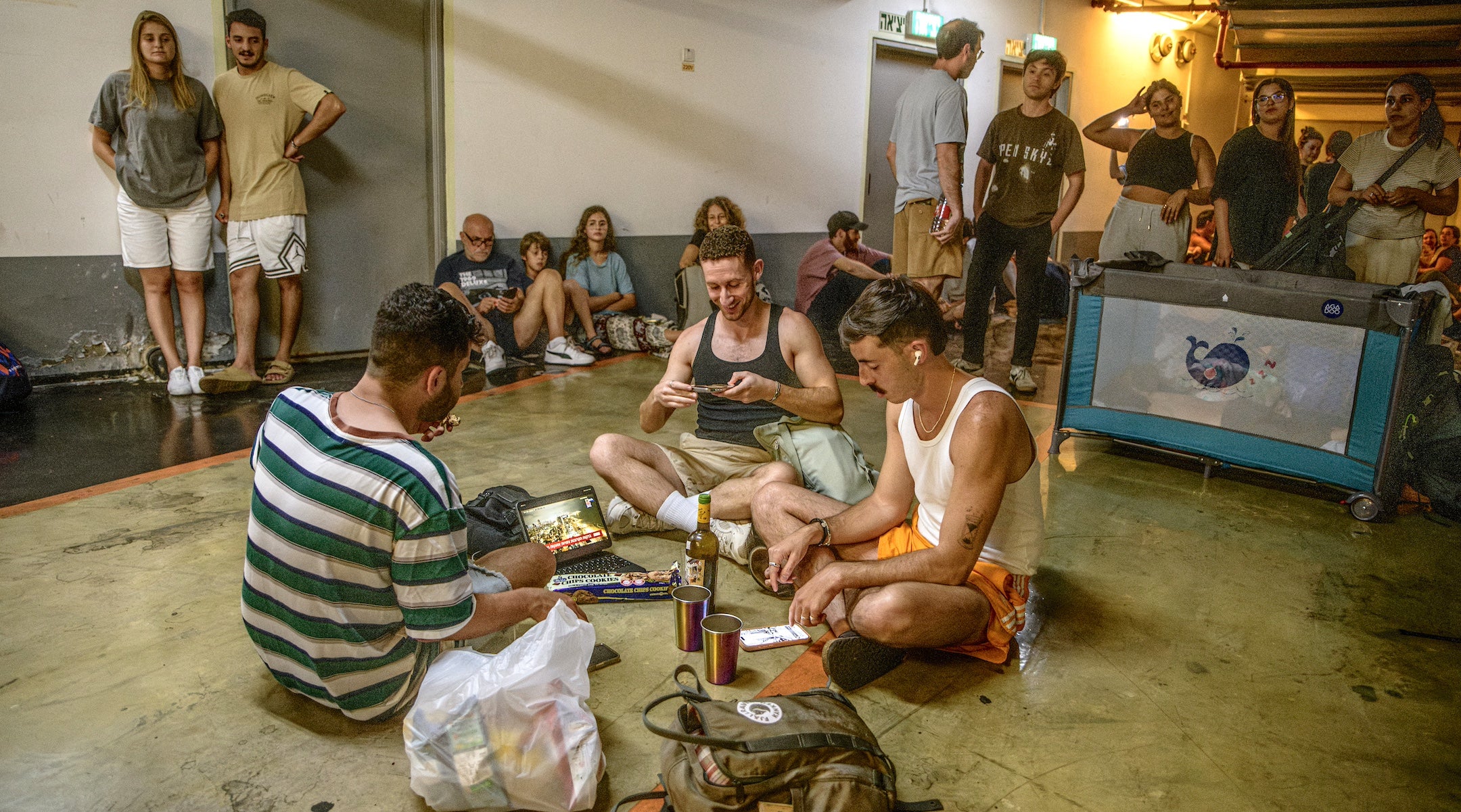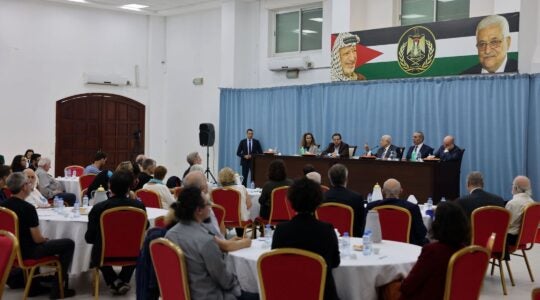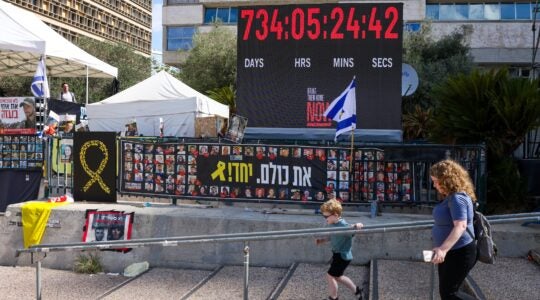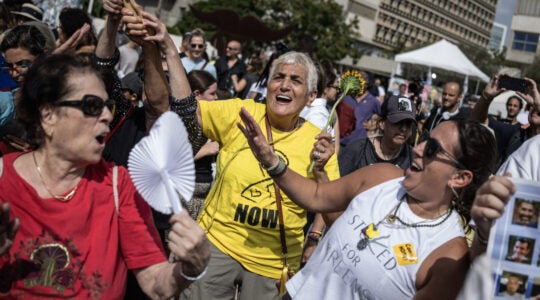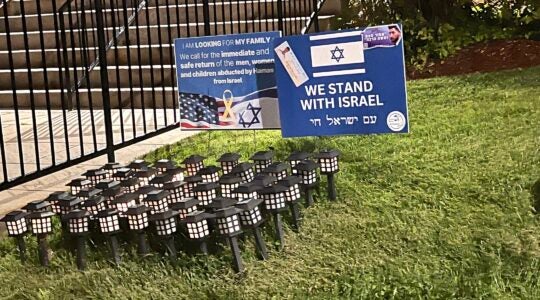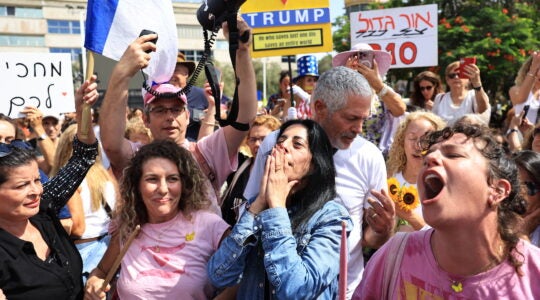Hours after the ceasefire between Israel and Iran took effect on Wednesday, Chaya Kaplan-Lester shared a Facebook memory from six years ago: for her bat mitzvah project, her daughter Beriah had enlisted a group of friends to clean and renovate their neighborhood shelter in Jerusalem.
It was a “sweet and symbolic” gesture to instill responsibility, Kaplan-Lester wrote. “We never dreamed we’d actually need it.”
But the same shelter instead became a refuge for residents of Nachlaot — a tightly packed neighborhood where most buildings lack protected spaces. During the two weeks of Israeli attacks on Iran and Iranian retaliation, shelters throughout Israel became a new kind of ecosystem, drawing out the best of people seeking safety — and sometimes the worst.
In addition to communal safe rooms, known as mamaks, Israel has two other types of protected spaces: The oldest are public or shared shelters called miklats, and the newest are in-house safe rooms called mamads, mandatory in all new construction since the mid-1990s.
For some, communal shelters provided an unexpected chance to bond with strangers. In her four-floor walkup in Netanya, Moriah, who declined to give her last name, said the nightly routine of heading to the bomb shelter created a rare sense of familiarity among neighbors.
“Given the option, of course I’d rather have a safe room in my apartment than go up and down the stairs every night,” she said. “But I’ve had more real conversations with neighbors in the last week than in all the time I’ve lived here. Most of us never exchanged more than a ‘hi’ on the stairwell.”
In a public shelter in Jaffa, Shai Steinhaus described how people from all backgrounds began jamming together on instruments. “It was an oasis of peace, awaiting the next Iranian attack,” said Steinhaus. Some of them promised to continue playing music after the war. At another shelter nearby, two Cuban salsa teachers held an impromptu performance, entertaining more than 100 people (and 15 dogs).
And for Tel Aviv school teacher Nataly Speier, her workplace became a haven. On the second night of the war, a missile strike shattered the windows of their apartment, which is a short walk from the Kirya military headquarters in Tel Aviv, one of the primary targets during the Iranian barrage. Although classes were cancelled during the hostilities, she, her husband and their children trekked nightly to the nearby school, where each floor has three communal mamaks.
Speier was lucky: Her family was assigned their own mamak in the school, which she outfitted with snacks and a budget projector, transforming it into a makeshift movie theater.
“Obviously there were some really scary moments but there were also some really sweet ones. It’s not often we get to bond like that as a family,” Speier said.
Other spaces became popup communities. Malls, train stations and even decrepit bus terminals transformed into overnight refuges.
The Tel Aviv Central Bus Station and Dizengoff Center mall — both aging, labyrinthine structures with fierce loyalists and detractors in equal measure — share another key feature: underground shelters built to withstand a nuclear strike.
Four floors down in Dizengoff Center, the Brothers and Sisters in Arms aid group created a sprawling overnight compound. Tents, mattresses, board games and staffed volunteers made the space accessible to families from 6 p.m. to 9 a.m. daily. “Israel society’s resilience is built on mutual responsibility. So what’s more righteous than helping someone who doesn’t have a safe room, who doesn’t want to be alone, or who can’t get to shelter in time?” the group’s co-founder Eyal Naveh wrote on X.
Underground light rail stations, not in use during the war, also turned into nightly refuges. Roi Asraf slept in Ramat Gan station with his wife and 3-year-old daughter. Despite the hardship, he said he supported the strikes on Iran. “If I have to sleep a week of my life in a train station for everything to be safer, I’m willing to do it,” he told the Associated Press.
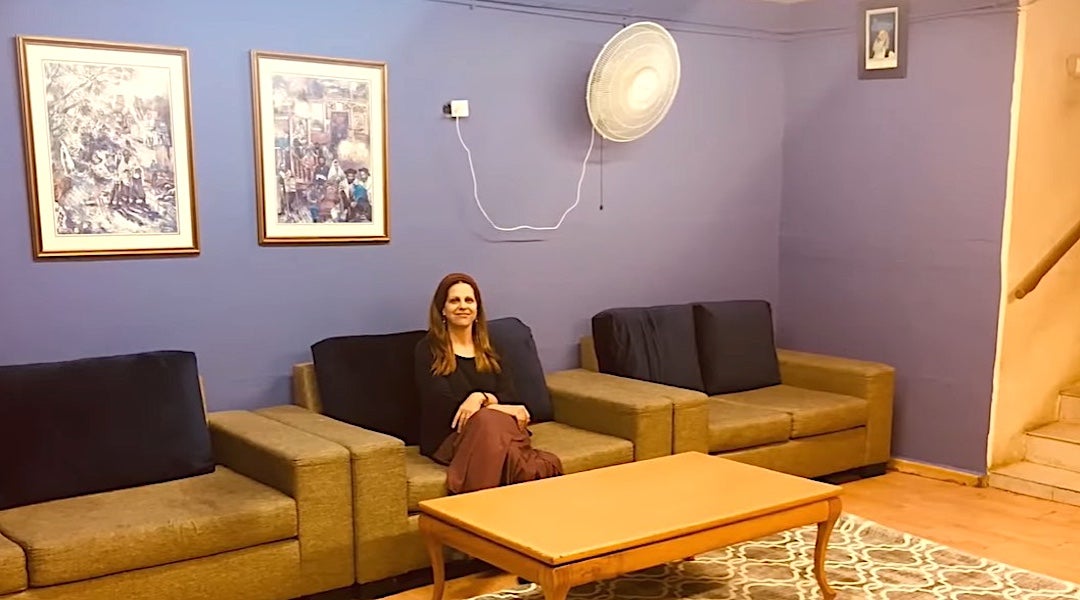
Chaya Kaplan-Lester sits in the public shelter in Jerusalem renovated by her daughter. (Courtesy Chaya Kaplan-Lester)
Hospitals adapted too. At Haifa’s Rambam Health Care Campus — home to the world’s largest underground fortified hospital — patients and staff relocated below ground to continue round-the-clock care. At Wolfson Medical Center in Holon, the maternity ward was relocated underground after a Friday night siren interrupted a birth just as the baby’s head was crowning, The Times of London reported. “Do I risk the baby or risk my life?” the midwife had asked. “We can’t move women during labor,” Dr. Ilia Kleiner, head of the unit, told the newspaper. “So we decided to move the whole unit below ground.”
Other life events also unfolded in the shelters. As in the early weeks after Oct. 7, when couples across the country chose not to cancel their weddings — even if it meant holding them inside shelters — similar scenes played out this time around. The Kfar Saba municipality gave permission for a local couple to get married in its shelter after their outdoor hall was canceled. Omer Komar and Shir Briger also wed inside a shelter in the Hadera municipality building. “This is the first time we’ve ever done anything like this, and it’s a huge honor,” the northern city’s mayor, Nir Ben Haim, was quoted as saying in the Israel Hayom daily.
When a siren interrupted the wedding of new immigrant Malka Biton in Petach Tikva, guests and bride ducked into a shelter, where they continued dancing.
But not all shelter stories were heartwarming. A series of incidents sparked public anger and official censure after videos emerged showing residents blocking others — sometimes violently — from entering public shelters. Israeli law prohibits denying anyone access to a bomb shelter during an attack and violators can face up to a year in prison or a fine, but enforcing the law is fraught.
In Bat Yam, a woman who appeared to be in her late sixties physically blocked two men — one with a small dog — from entering a shelter. A video of the incident went viral. One of the men, Shoval Fux, told Israel’s Channel 12 he had no choice but to remain outside: “I’m standing in front of an elderly woman, my grandmother’s age. I believe in respecting people and adults, of course, but she’s preventing me from entering.”
Michal Orovano, who coordinates a joint program for mediating shelter disputes by the Welfare Ministry and Mosaica Conflict Resolution Center, said the war sparked a surge in complaints, with minority populations particularly vulnerable. In one extreme case in Petah Tikva, a Russian immigrant identified as Vladimir said municipal workers blocked him from entering a public shelter — a multi-level underground parking garage — during an alert. The mediation service received several reports of Arab residents in mixed cities who were barred from entering neighborhood shelters — an act they believed was motivated by racism. In another instance, the arrival of Bedouin families by bus to the town of Arad triggered panic among locals.
Elsewhere, tensions flared when a dog trainer descended into a shelter accompanied by 10 dogs, unnerving others who were sheltering there. “We’ve seen very grave incidents in shelters, from threats and cursing to physical violence such as beatings and throwing chairs,” she told Israel’s Channel 12.
The problem is compounded in many parts of the country — particularly Arab towns, unrecognized Bedouin villages and older Jewish neighborhoods — where shelter infrastructure is limited or nonexistent. An Iranian missile strike in Tamra, an Muslim-majority city in northern Israel that has no public shelters, killed four members of the same family last week.
Civil society groups were the first to respond to the country’s shelter shortfalls. Organizations like Brothers in Arms, Standing Together and the International Fellowship of Christians and Jews mobilized volunteers and resources to clean, refurbish, and expand shelter access. The IFCJ, in coordination with Israel’s Home Front Command, pledged $2.5 million to install over 100 reinforced shelters nationwide, including dozens of Arbel shelters, designed to withstand high-impact threats.
Meanwhile, after mounting criticism over the government’s inaction, authorities approved a 100 million shekel ($29.5 million) plan to renovate existing public shelters and install portable ones — but that only happened seven days into the war. The scale of destruction was staggering: The Tax Authority has so far received over 40,000 property damage claims, expected to reach 50,000, totaling more than $1.47 billion — double the combined total of claims from all Hamas, Hezbollah, and Houthi attacks over the past 20 months.
Beriah, who had cleaned up the shelter in Nachlaot to mark her coming-of-age, turned 18 the night Israel launched its first direct strike on Iran.
“What once felt like a quaint bat mitzvah project has become a literal lifesaver,” Kaplan-Lester said. “You never know what acts of kindness will matter most. You never know when the future will arrive, demanding the things you quietly prepared years ago.”
JTA has documented Jewish history in real-time for over a century. Keep our journalism strong by joining us in supporting independent, award-winning reporting.
